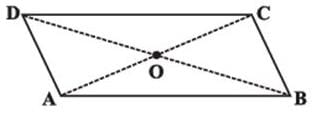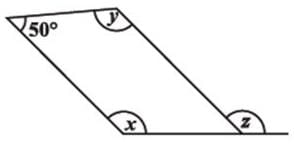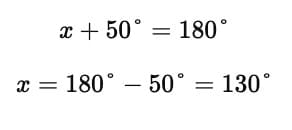Class 8 Exam > Class 8 Tests > Test: Quadrilaterals - 1 - Class 8 MCQ
Test: Quadrilaterals - 1 - Class 8 MCQ
Test Description
10 Questions MCQ Test - Test: Quadrilaterals - 1
Test: Quadrilaterals - 1 for Class 8 2025 is part of Class 8 preparation. The Test: Quadrilaterals - 1 questions and answers have been prepared
according to the Class 8 exam syllabus.The Test: Quadrilaterals - 1 MCQs are made for Class 8 2025 Exam.
Find important definitions, questions, notes, meanings, examples, exercises, MCQs and online tests for Test: Quadrilaterals - 1 below.
Solutions of Test: Quadrilaterals - 1 questions in English are available as part of our course for Class 8 & Test: Quadrilaterals - 1 solutions in
Hindi for Class 8 course.
Download more important topics, notes, lectures and mock test series for Class 8 Exam by signing up for free. Attempt Test: Quadrilaterals - 1 | 10 questions in 20 minutes | Mock test for Class 8 preparation | Free important questions MCQ to study for Class 8 Exam | Download free PDF with solutions
Test: Quadrilaterals - 1 - Question 1
Which of the following quadrilaterals has two pairs of adjacent sides equal and diagonals intersecting at right angles?
Detailed Solution for Test: Quadrilaterals - 1 - Question 1
Test: Quadrilaterals - 1 - Question 2
If the sides of a triangle are produced in order,What is the sum of the exterior angles so formed?
Detailed Solution for Test: Quadrilaterals - 1 - Question 2
Detailed Solution for Test: Quadrilaterals - 1 - Question 3
Test: Quadrilaterals - 1 - Question 4
The sum of the measures of the three angles of a triangle is ______.
Detailed Solution for Test: Quadrilaterals - 1 - Question 4
Test: Quadrilaterals - 1 - Question 5
The ________ of a rhombus are perpendicular bisectors of one another.
Detailed Solution for Test: Quadrilaterals - 1 - Question 5
Detailed Solution for Test: Quadrilaterals - 1 - Question 6
Test: Quadrilaterals - 1 - Question 7
The opposite sides of a parallelogram are of ________ length.
Detailed Solution for Test: Quadrilaterals - 1 - Question 7
Test: Quadrilaterals - 1 - Question 8
Which of the parallelograms has all sides equal and diagonals bisect each other at right angle?
Detailed Solution for Test: Quadrilaterals - 1 - Question 8
Test: Quadrilaterals - 1 - Question 9
Which of the following quadrilaterals has two pairs of adjacent sides equal and diagonals intersecting at right angles?
Detailed Solution for Test: Quadrilaterals - 1 - Question 9
Detailed Solution for Test: Quadrilaterals - 1 - Question 10
Information about Test: Quadrilaterals - 1 Page
In this test you can find the Exam questions for Test: Quadrilaterals - 1 solved & explained in the simplest way possible.
Besides giving Questions and answers for Test: Quadrilaterals - 1, EduRev gives you an ample number of Online tests for practice
Download as PDF

















